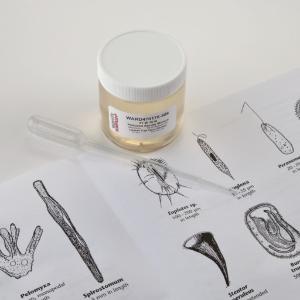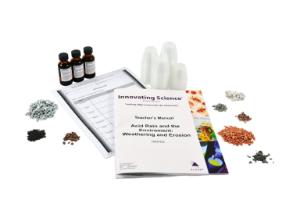Environmental Geology; Plus a free student handout from AccessScience
Students explore the effects of Earth science on human civilizations, including soil erosion, water and air pollution, flooding, earthquake and volcanic activity, mining, and global warming.
Access to this content is available to Ward’s World readers for free from McGraw Hill’s AccessScience, an award-winning, digital STEM resource that provides immediate, authoritative answers to students’ thirst for scientific knowledge on topics such as climate change, virology, pollution, and more. Ward’s World and McGraw Hill have partnered to offer educators a no-obligation, free trial subscription to this product. Request your free trial today and discover how valuable AccessScience can be for you and your students.
Environmental Geology focuses on the interaction between humans and the geologic processes that shape the Earth’s environment. Human survival depends on the natural environment, and students in your class will be fascinated by how these concepts are relevant to their own lives. Environmental geology relies on meteorology, climatology, oceanography, hydrology, environmental chemistry, and ecology (biology); there’s a lot for students to dig into!
If you really want to rock their world, start by sharing these fascinating soil erosion facts:
- 38% of the world’s land surface is used for agriculture (1/3 cropland, 2/3 grazing livestock). The continued growth in the global population puts a heavy strain on the land, a limited resource.1
- Once destroyed, it can take up to 1,000 years to restore even a few centimeters of soil. 1
- Scientists estimate that humans began accelerating soil erosion about 4,000 years ago.2
- Every day, some 1.3 million tons of sediment pour from the mouth of the Amazon River into the Atlantic Ocean. Scientists estimate that erosion from the Amazon River basin contributes about 85 to 90 percent of all the sediment that reaches the Atlantic Ocean.3
- There is some good news: 23% of lake sites had a decrease in erosion rates, which may result from human-driven river management, such as the construction of dams.4
Facts like these and your lesson plans may give students a better understanding of why Franklin D. Roosevelt said, “A nation that destroys its soil, destroys itself.”
Download McGraw Hill's AccessScience article, Environmental Geology, to develop your lesson plans that help students understand how geology affects people. The free download also includes assessment questions and answers you can use to test student understanding.
1. Food and Agriculture Organization of the United Nations 2. Soil erosion and agricultural sustainability; David R. Montgomery, 2007 3. NASA: Mud from the Andes Carried by the Amazon 4. Eos: Science News A Dirty Truth: Humans Began Accelerating Soil Erosion 4,000 Years Ago
Recommended Products
[StartProductBlock]

Ward's® Live Mixed Protist Culture
Each jar includes at least seven organisms commonly found in a lake or pond.
[EndProductBlock]
[StartProductBlock]
Ward's® Landform Simulator Systems
The fully equipped system simulates many of the basic landforms for Earth Science. Includes sediment deposition, wave maker, and rainfall simulator.
[EndProductBlock]
[StartProductBlock]

Environmental Chemistry: Acid Rain, Weathering, and Erosion
Students observe the effect of an acidic environment on rock materials and metals.
[EndProductBlock]
